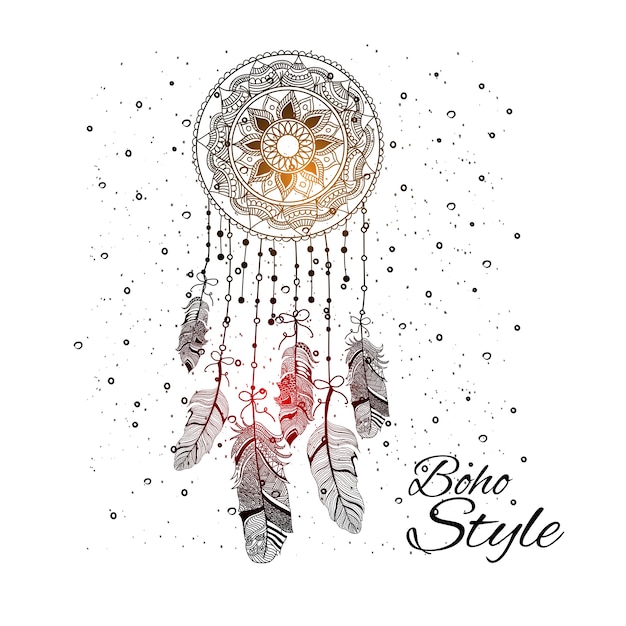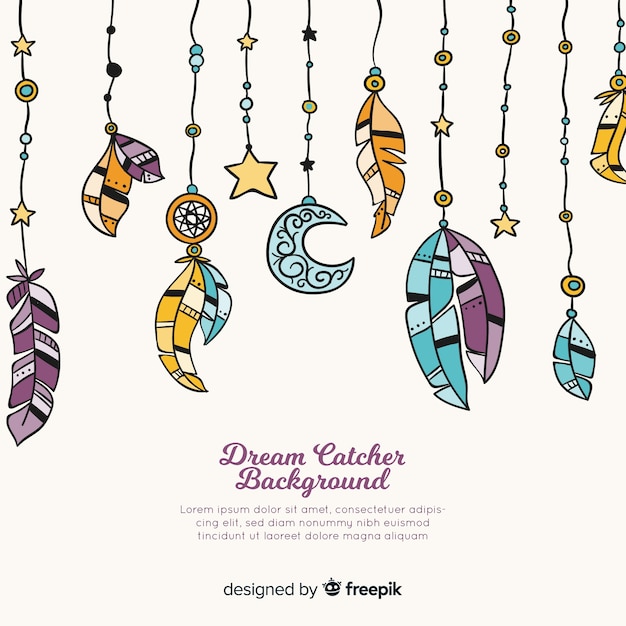Types Of Dream Catcher
Legend of the Dream Catcher: A Lakota version of the dreamcatcher story featuring the trickster Iktomi. Native American Dreams: The meanings and interpretation of dreams in various North American Indian cultures. Native American Arts and Crafts: Orrin contributed to this larger directory of Indian crafts, many of which are authentic. The dreamcatcher is a Native American Indian craft. The traditional dreamcatcher was made to protect an individual from bad dreams. The premise of the dreamcatcher is to catch the bad dreams in the center hole of the web while allowing the good dreams to pass through.
Dream Catchers
Dream catchers are often hanged to keep little children from having nightmares. It is also believed that dream catchers are intended to slowly dry out and come apart as your child grows older. According to the belief, it is said that the air is filled with all kinds of dreams. These dreams are either good or bad. There are different types of dream catchers. Every dream catcher has a hole in its center. The bad dreams get caught in the web in the center while the good dreams flow down the feathers to the person on which it is hanged. There are many theories for dream catchers. One theory says that good dreams get filtered through the net in the center. Yet another theory explains that the good dreams get caught in the center while the bad ones flow away from the central hole.
Whatever the theory, one thing is sure about dream catchers; they surely do no harm. The very idea of preventing nightmares is quite compelling. They are also very beautiful and that is why they have become very popular.
Throughout time, dreams have had a high importance for people. Our nightly visits to another world are peculiar, often unexplained, pleasant at times and really scary at times. Whether these dreams actually happen in reality or not, we do get some satisfaction hanging a dream catcher above our beds before sleeping.
Dream Catchers Origin
We have all seen dream catchers hanging from a porch or a tree or even in a souvenir shop, but have we ever wondered about is origin and history?
Dream catchers were originally created by the American Indians. But some believe that they have originated from the Ojibwa Chippewa tribe. According to some researchers, dreamcatchers were passed on from the Ojibwe through trade and intermarriage. In the Ojibwe language, ‘dreamcatcher’ means ‘spider’. This spider could refer to the web which is woven over the hoop. The web patterns of a dreamcatcher is similar to snowshoes made by the Ojibwe people. Even Lakota nations along with the Ojibwe and Native American tribes, have shown the existence of dream catchers in their cultures. Spider as a symbolism of comfort was first used by these people contradictory to what the world believes them to be: creepy crawlers.

According to a famous story from the Ojibwe tribe, it was believed that a mysterious ‘Spider Woman’ acted as the spiritual protector of their tribe, especially for the young children and new born babies. As the tribe grew and flourished, the woman found it difficult to protect and watch over all the members. She then created the dreamcatcher following which, many mothers and grandmothers recreated the hanging to mystically protect their own children.

Today they come in a many different colors and types. A typical dream catcher is made of a small wooden hoop in the centre covered in a web or net made of natural fibers and some meaningful and symbolic items like beads, feathers and shells are attached to the bottom of the hoop.
Different Types Of Dream
Whatever theories or versions of the dreamcatchers we come across from history, the underlying symbolism and purpose remains the same. Dreamcatchers have a protective purpose. They direct good dreams and deflect bad dreams from the person.
There are various patterns and designs made in dreamcatchers and all have different meaning. Dreamcatchers also come in different colors, all with a different meaning. Traditional dreamcatchers were made with eight points where the web is attached to the hoop. These eight points are regarded as the eight legs of a spider. The spider symbolizes learning, wisdom and energy.
Native Americans believed dreamcatchers to be much more than catching good dreams. They also believed them to be totems representing good energy. According to them, dreamcatchers help to neutralize bad energy.

What Do Dream Catchers Do
Dream catchers come in many different types and colors. The various attachments on the web of the dreamcatcher also symbolize different things. According to the Native Americans, the beads in a dream catcher symbolize the spider. Spider is a web weaver. According to another theory, the beads symbolize good dreams which cannot pass through the web and remain immortalized as sacred charms.
Real and authentic dream catchers are hard to find. Today these handmade crafts come in varied colors and types and have become objects of decor. The authentic ones were very small in size and had sacred charms like feathers and beads.
Whatever be their type and color, they sure are adorable and when only goodness reflects from these pretty hangings, then why not hang one above your head!

Sweet Dreams!
Types Of Dream Catchers And Their Meanings
Question: 'Is it wrong for a Christian to have a dream catcher?'Answer: Dream catchers have long been a part of Native American religion, lore, and art, originating with the Ojibwe, or Chippewa, and the Lakota, a confederation of seven Sioux tribes. Dream catchers are webbed and beaded circles hung with feathers from the base of the circle. As one might suspect, the purpose of a dream catcher is to catch dreams—that is, to trap bad or evil dreams and channel good dreams to the sleeper. Dream catchers are usually placed in a window or above the bed, allowing the good dreams to drip down the feathers onto the sleeper below.
Essentially, a dream catcher is intended to manipulate the spirit world. Some people believe in the efficacy of dream catchers. Others are unsure but are superstitious enough to keep one in the bedroom. Still others see dream catchers as part of a cultural history or a piece of art that looks good dangling from a rear-view mirror.
Types Of Indian Dream Catcher
 Knowing the background of dream catchers and their talisman-like use, many Christians want nothing to do with them. Is such concern warranted? A passage in 1 Corinthians 8 may be helpful. Paul is speaking to Christians living in an extremely pagan culture ruled by superstition, magic, and sacrifices, all done in the name of various idols. The sacrifices were a particular concern, for the meat sacrificed was then sold at market. Some Christians felt eating sacrificed meat was endorsing the sacrifice and therefore inappropriate for a Christian; others believed that, since they were not worshiping the idol themselves, it was not wrong.
Knowing the background of dream catchers and their talisman-like use, many Christians want nothing to do with them. Is such concern warranted? A passage in 1 Corinthians 8 may be helpful. Paul is speaking to Christians living in an extremely pagan culture ruled by superstition, magic, and sacrifices, all done in the name of various idols. The sacrifices were a particular concern, for the meat sacrificed was then sold at market. Some Christians felt eating sacrificed meat was endorsing the sacrifice and therefore inappropriate for a Christian; others believed that, since they were not worshiping the idol themselves, it was not wrong.Types Of Dream Catchers
Paul’s guidance was this: “There may be so-called gods in heaven or on earth—as indeed there are many “gods” and many “lords”—yet for us there is one God. . . . However, not all possess this knowledge. But some, through former association with idols, eat food as really offered to an idol, and their conscience, being weak, is defiled” (1 Corinthians 8:5–7). Ultimately, “food will not commend us to God. We are no worse off if we do not eat, and no better off if we do,” yet we must be careful “that this right of yours does not somehow become a stumbling block to the weak” (1 Corinthians 8:8, 9). Just as it was with meat associated with idolatry in the 1st century, so it is with superstitious objects in the 21st.
The Christian understands that false gods are nothing and that a dream catcher has no power in itself. The believer in Christ could easily see a dream catcher as nothing more than a craft or a cultural expression. However, before he buys a dream catcher and hangs it in the window, he should consider other people’s reactions to it. Will others see it as a charm to manipulate the spirit world? Will someone assume the one in possession of a dream catcher approves of Indian religions? Keeping a dream catcher is a matter of conscience; as long as it is not used as a good luck charm, it is innocent enough. But consideration must be given to those we seek to minister to.